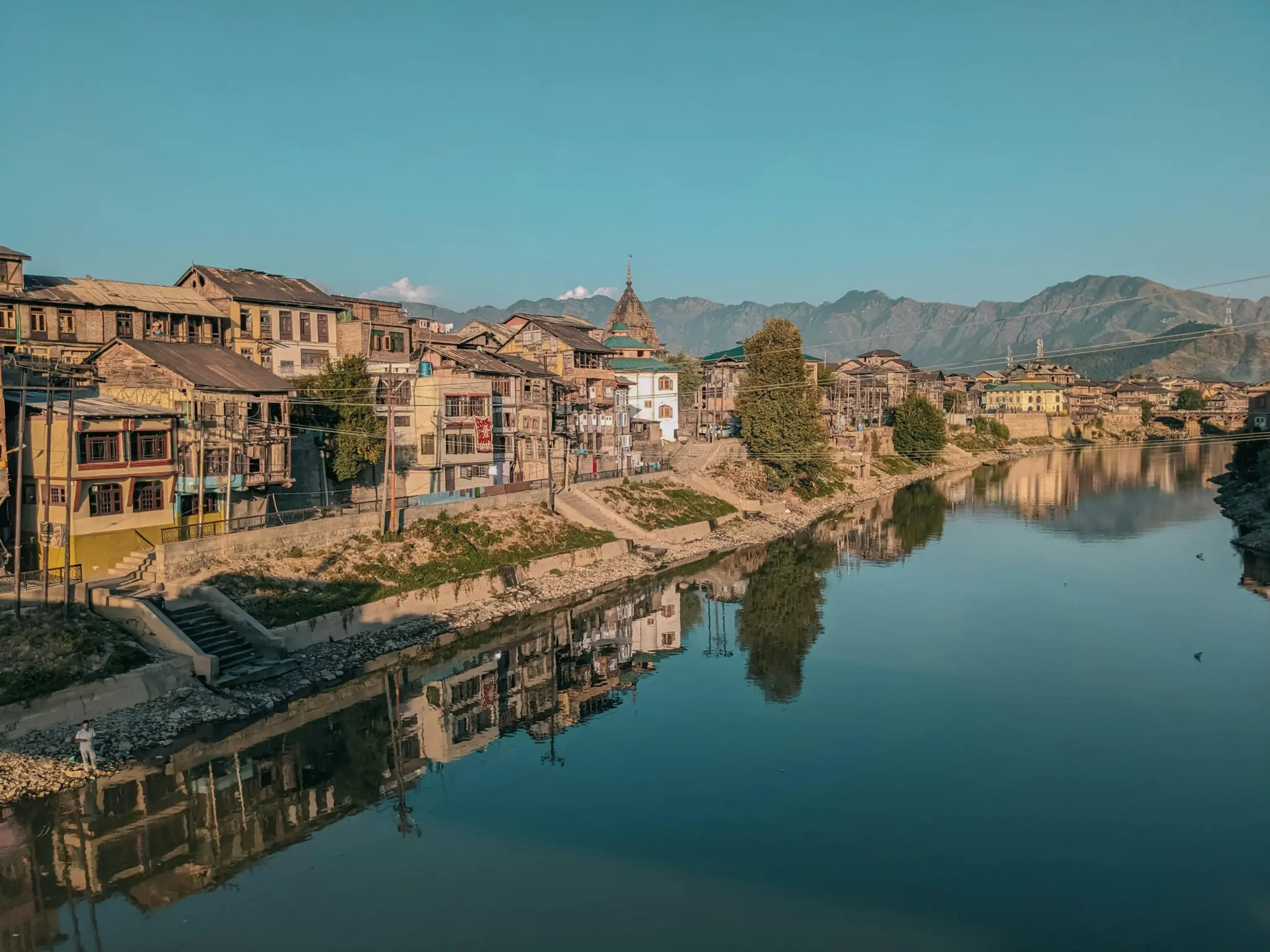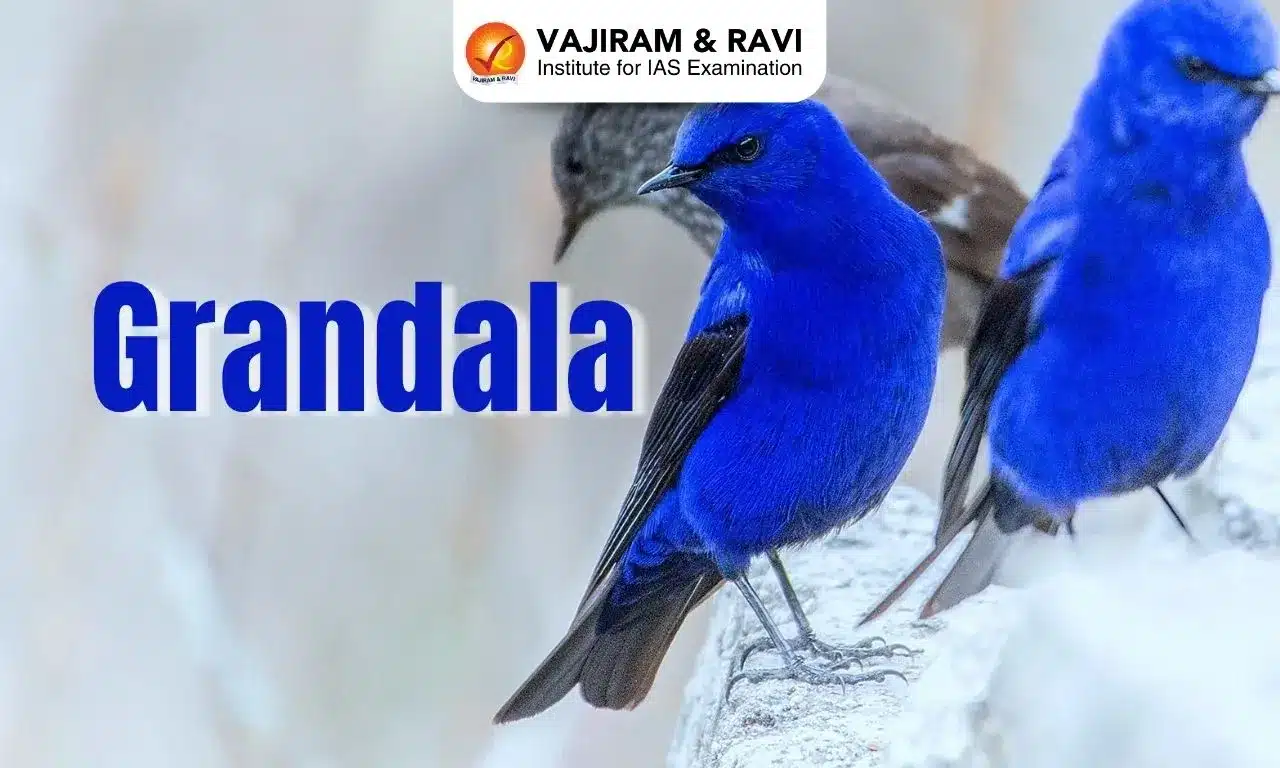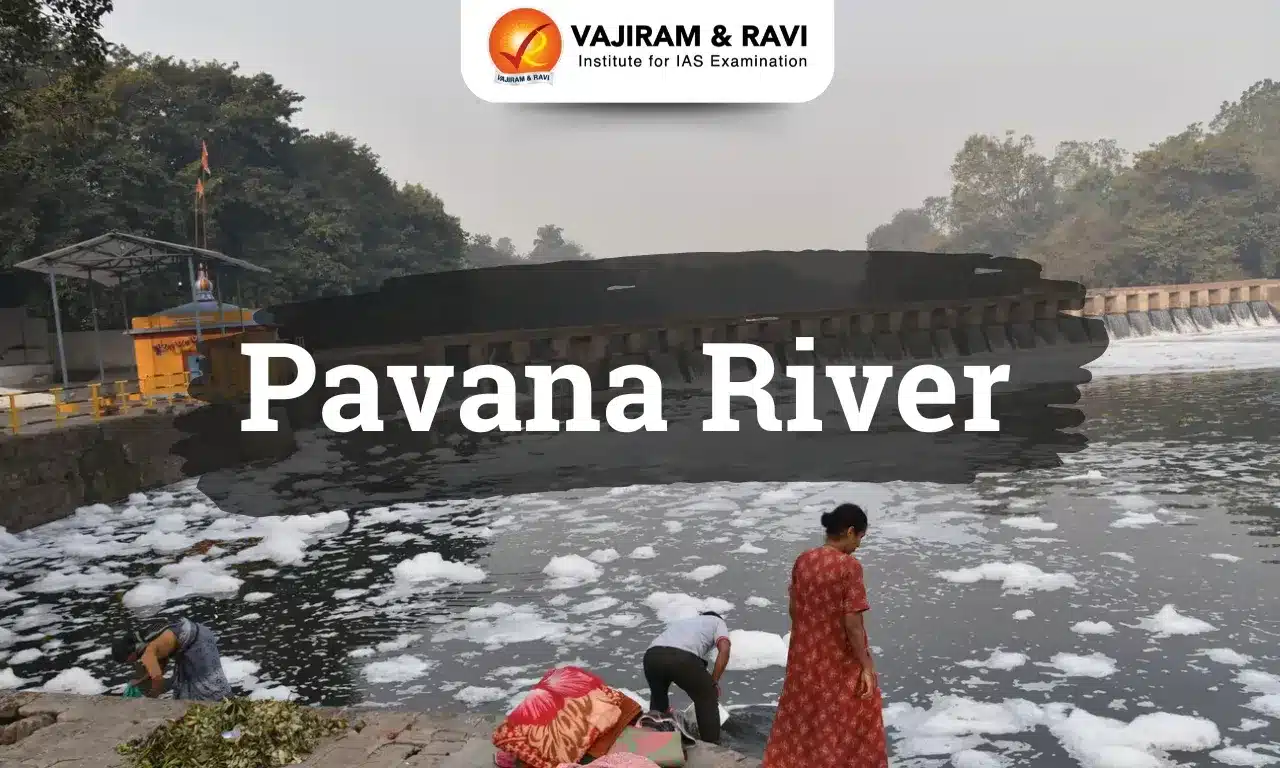About Jhelum River:
- It is a river of northwestern India and northern and eastern Pakistan.
- It is a tributary of the Indus River.
- The Jhelum (Vyeth in Kashmiri, Vetesta in Sanskrit, and Hydaspes in Greek) is the main waterway of the Kashmir valley.
- It is the largest and most western of the five rivers of Punjab and passes through the Jhelum District in the North of Punjab province, Pakistan.
- Course:
- Origin: It originates at the Verinag Spring at Anantnag, at the foot of the Pir Panjal range in the Kashmir Valley.
- The river meanders northwestward from the northern slope of the Pir Panjal Range through the Vale of Kashmir to Wular Lake at Srinagar, which controls its flow.
- The river makes a deep, narrow gorge on its way to Pakistan.
- It joins the Chenab River near Trimmu, Pakistan.
- Length: It has a total length of about 725 km (450 mi).
- Major Tributaries:
- The largest tributary of the Jhelum is the Kishenganga (Neelum) River, which joins near Muzaffarabad and enters the Punjab province, Pakistan.
- The Kunhar River is the second largest tributary of the river, which connects Pakistan-occupied Kashmir (PoK) and Pakistan on the Kohala Bridge of the Kanghan valley.
- Other tributaries include the Sandran River, Bringi River, Arapath River, Watlara River, Lidder River, and Veshaw River.
Q1: Which are the main tributaries of the Indus River?
The Indus receives its most-notable tributaries from the eastern Punjab Plain. These five rivers—the Jhelum, Chenab, Ravi, Beas, and Sutlej—give the name Punjab (“Five Rivers”) to the region divided between Pakistan and India.
Source: Kashmir Girl Thrown Off Bridge By Aunt, Succumbs 3 Days Later In Srinagar Hospital
Last updated on July, 2025
→ UPSC Notification 2025 was released on 22nd January 2025.
→ UPSC Prelims Result 2025 is out now for the CSE held on 25 May 2025.
→ UPSC Prelims Question Paper 2025 and Unofficial Prelims Answer Key 2025 are available now.
→ UPSC Calendar 2026 is released on 15th May, 2025.
→ The UPSC Vacancy 2025 were released 1129, out of which 979 were for UPSC CSE and remaining 150 are for UPSC IFoS.
→ UPSC Mains 2025 will be conducted on 22nd August 2025.
→ UPSC Prelims 2026 will be conducted on 24th May, 2026 & UPSC Mains 2026 will be conducted on 21st August 2026.
→ The UPSC Selection Process is of 3 stages-Prelims, Mains and Interview.
→ UPSC Result 2024 is released with latest UPSC Marksheet 2024. Check Now!
→ UPSC Toppers List 2024 is released now. Shakti Dubey is UPSC AIR 1 2024 Topper.
→ Also check Best IAS Coaching in Delhi














